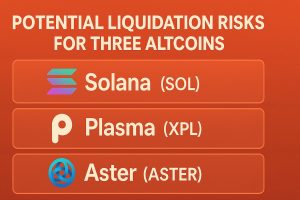The commercial real estate sector is experiencing an escalating wave of distress, according to a recent report by Bloomberg. This trend signals significant challenges for investors, lenders, and property owners, and could have wider economic implications.
Over recent months, the commercial real estate market has shown signs of stress driven by rising interest rates, changing work habits, and a slowdown in retail and office space demand. These factors have led to increasing defaults on loans, declining property values, and a surge in distressed asset sales. Experts warn that this distress could deepen if economic conditions do not improve, potentially triggering a broader financial instability in the real estate sector.
The report highlights that sectors such as retail, hospitality, and office spaces are particularly vulnerable. Many retail chains are struggling to adapt to the shift toward e-commerce, while office spaces face reduced demand as remote work becomes more permanent. The hospitality industry, affected by fluctuating travel patterns and consumer confidence, also contributes to the overall picture of distress.
Financial institutions and investors holding commercial real estate assets are directly impacted by this downturn. A rise in loan delinquencies and foreclosures may lead to tighter credit conditions, further exacerbating the crisis. For property owners, declining rent revenues and increasing vacancy rates threaten their financial stability, potentially leading to more distressed sales and a further drop in asset prices.
Market analysts suggest that the current distress could influence broader economic policies and investment strategies. Some experts warn that unless there is a significant policy intervention or a rebound in economic activity, the sector might face prolonged difficulties. On the other hand, others see opportunities for distressed asset acquisitions at lower prices, which could eventually lead to recovery if market conditions improve.
Looking ahead, investors and stakeholders should monitor upcoming economic data, interest rate trends, and policy developments. The health of the commercial real estate sector remains a critical indicator of overall economic stability, and any worsening of conditions could have ripple effects across multiple sectors and markets.
What are the main sectors affected by real estate distress?
The retail, office, and hospitality sectors are most impacted due to declining demand, changing consumer behaviors, and economic uncertainties.
How might this distress affect lenders and investors?
Increased loan defaults and distressed asset sales could tighten credit conditions and lead to financial losses for lenders and investors holding commercial properties.
What should stakeholders watch for in the coming months?
Key indicators include interest rate movements, economic growth data, policy responses, and the rate of distressed asset sales, which will influence the sector’s recovery trajectory.







